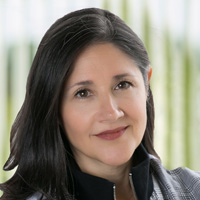5 Trends in High-Net-Worth Philanthropy
Wealthy families and organizations are giving more to charity but also targeting funding to fewer grants in their efforts to create bigger impacts.


Philanthropy is an increasingly important part of people’s financial pictures. It allows individuals to link their personal goals and values to the way they save, invest and spend their money. For “high-net-worth” families, it’s an opportunity to unify a shared legacy for generations to come. Let’s look at some recent trends in high-net-worth philanthropy.
We recently examined the giving activities of nearly 1,000 private foundations with assets between $1 million and $500 million over the past two years to understand how wealthy families are pursuing their philanthropy.
While some of the highs and lows we experienced in that period may feel like incomparable moments in time, they’ve had a lasting impact that sets the stage for future giving.

Sign up for Kiplinger’s Free E-Newsletters
Profit and prosper with the best of expert advice on investing, taxes, retirement, personal finance and more - straight to your e-mail.
Profit and prosper with the best of expert advice - straight to your e-mail.
These top five findings provide a benchmark for established and aspiring philanthropists.
1. Philanthropists Are Giving Away More.
Supported by double-digit endowment growth and the residual effects of 2020, private foundations increased their giving in 2021. The foundations we analyzed gave away a total of $689 million in 2021, an increase of $40 million over the prior year, and an average of $727,129 per foundation.
2. Philanthropy Is Becoming More Concentrated.
At the same time, these foundations funded 500 fewer grants in 2021, indicating a shift from getting aid to as many recipients as possible during the intense and rapidly changing needs of 2020 to increased targeting of their dollars in an effort to create greater impact.
3. Foundations Are Going Above and Beyond More Often.
Our data indicates that a large number of foundations regularly give more than the annual mandatory distribution requirement of 5%, signaling a strong commitment to go above and beyond for charitable causes.
In 2021, the foundations in our study disbursed an average of 7.2% of their assets, with smaller foundations (those with assets between $1 million and $10 million) giving away 8.9% of their assets.
4. Prepandemic Norms Are Reemerging.
In addition to fewer, more concentrated grants, there is other evidence that philanthropists are starting to revert to prepandemic giving patterns.
First, there was a notable decrease in grants to human services and public/societal benefit organizations, which both saw sharp increases during 2020 as donors focused on the public health emergency and tackling systemic racial inequities.
Second, we observed less use of general-purpose grants, which were especially useful during the pandemic, and more specific-purpose grants that have long been favored by major donors, as they allow them to ensure their gifts align with their mission.
Third, during the recovery of 2021, there was a 64% decrease in grants to individuals, which were used abundantly in 2020 to get aid quickly and directly to the people and places that needed it most.
5. Foundation Size Influences Makeup of Endowment Portfolio.
Smaller foundations have the highest allocation to equities, ending 2021 with 61.5% exposure. They also maintain the highest level of cash at 12.4%, as the increased liquidity enables higher levels of giving.
Conversely, larger foundations have more complex portfolios. They have an average allocation of 23.5% to alternative investments, such as private equity and hedge funds, which is nearly five times the exposure of smaller foundations, and 8.4% of their assets are in a unique mix of life insurance, program-related investments, closely held stock, receivables, annuities, inventory and other nontraditional assets.
Learn more in the complete 2022 Report of Private Philanthropy.
Get Kiplinger Today newsletter — free
Profit and prosper with the best of Kiplinger's advice on investing, taxes, retirement, personal finance and much more. Delivered daily. Enter your email in the box and click Sign Me Up.

Hannah Shaw Grove is the chief marketing officer of Foundation Source, founder of "Private Wealth" magazine and author of 11 data-based books and hundreds of reports and articles on topics relating to the creation, management, disposition and transfer of wealth. Hannah has previously been the chief marketing officer at Apex Clearing, iCapital Network and Merrill Lynch Investment Managers and is a cum laude graduate of Harvard University. She holds the FINRA Series 6, 7, 24, 26 and 63 licenses.
-
 6 Stunning Waterfront Homes for Sale Around the US
6 Stunning Waterfront Homes for Sale Around the USFrom private peninsulas to lakes, bayous and beyond, Kiplinger's "Listed" series brings you another selection of dream homes for sale on the waterfront.
By Charlotte Gorbold Published
-
 Six Reasons to Disinherit Someone and How to Do It
Six Reasons to Disinherit Someone and How to Do ItWhether you're navigating a second marriage, dealing with an estranged relative or leaving your assets to charity, there are reasons to disinherit someone. Here's how.
By Donna LeValley Published
-
 Should You Still Wait Until 70 to Claim Social Security?
Should You Still Wait Until 70 to Claim Social Security?Delaying Social Security until age 70 will increase your benefits. But with shortages ahead, and talk of cuts, is there a case for claiming sooner?
By Evan T. Beach, CFP®, AWMA® Published
-
 Retirement Planning for Couples: How to Plan to Be So Happy Together
Retirement Planning for Couples: How to Plan to Be So Happy TogetherPlanning for retirement as a couple is a team sport that takes open communication, thoughtful planning and a solid financial strategy.
By Andrew Rosen, CFP®, CEP Published
-
 Market Turmoil: What History Tells Us About Current Volatility
Market Turmoil: What History Tells Us About Current VolatilityThis up-and-down uncertainty is nerve-racking, but a look back at previous downturns shows that the markets are resilient. Here's how to ride out the turmoil.
By Michael Aloi, CFP® Published
-
 Home Insurance: How to Cut Costs Without Losing Coverage
Home Insurance: How to Cut Costs Without Losing CoverageNatural disasters are causing home insurance premiums to soar, but don't risk dropping your coverage completely when there are ways to keep costs down.
By Jared Elson, Investment Adviser Published
-
 Markets Roller Coaster: Resist the Urge to Make Big Changes
Markets Roller Coaster: Resist the Urge to Make Big ChangesYou could do more harm than good if you react emotionally to volatility. Instead, consider tax-loss harvesting, Roth conversions and how to plan for next time.
By Frank J. Legan Published
-
 Why Homeowners Insurance Has Gotten So Very Expensive
Why Homeowners Insurance Has Gotten So Very ExpensiveThe home insurance industry is seeing more frequent and bigger claims because of weather, wildfires and other natural disasters.
By Karl Susman, CPCU, LUTCF, CIC, CSFP, CFS, CPIA, AAI-M, PLCS Published
-
 Going Through Probate? How to Find the Right Attorney
Going Through Probate? How to Find the Right AttorneyJust having the skills and experience to do the job isn't enough. The probate attorney you hire needs to have the right temperament for your particular case.
By John R. Silva, Esq. Published
-
 Widow's Penalty: Three Ways to Protect Your Finances
Widow's Penalty: Three Ways to Protect Your FinancesHigher Medicare premiums, smaller Social Security payments, bigger tax bills … Financial changes can hit hard when a spouse dies. How to counter the blow.
By Ashley Terrell, IAR Published